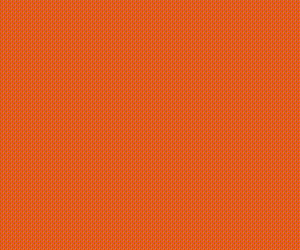-
 Home
Home
-
 News
News
-
 Colleges
Colleges
Pakistan's Largest Database of Colleges and Universities
Explore Largest Directory of Private and Govt. Colleges, Universities and find best institute for your future Education.
-
 Courses
Courses
-
 Admission
Admission
-
 Lectures
Lectures
-
 Online Test
Online Test
Short Question
- 9th Class Physics Short Questions
- 9th Class Chemistry Short Questions
- 9th Class Math Short Questions
- 9th Class Biology Short Questions
- 9th Class Computer Short Questions
- 9th Class English Short Questions
- 10th Class Physics Short Question
- 10th Class Chemistry Short Question
- 10th Class Math Short Question
- 10th Class Biology Short Question
- 10th Class Computer Short Question
- 10th Class English Short Question
-
 Past Papers
Past Papers
-
 Date Sheets
Date Sheets
-
 Results
Results
Exam Results 2024
Check online Results 2024 Matric Inter BA BSc B.Com MA MSc M.Com CSS PCS MCAT ECAT of all educational boards and universities in Pakistan
-
 Study Abroad
Study Abroad
Study Abroad Programs and Opportunities for Pakistani Students
Explore free study abroad search to find programs, consultants, events to study in USA, UK, Australia, China, Malaysia and many others.
-
 Jobs
Jobs
-
 Tutors
Tutors
-
 More
More
-
 Apps
Apps
5th Mathematics Chapter 3 Test
Mathematics 5th Class Chapter 3 Online Test
Try the Mathematics 5th Class Chapter 3 Online Test.
-
Total Questions10
-
Time Allowed10
Question # 1
-------- میں کسور کی تریب بدل دینے سے نتینے پر کوئی فرق نہیں پڑت
Question # 2


Question # 3
کمرےکا رقبہ =
Question # 4
1÷3÷2÷5 =
Question # 5


Question # 6
2÷3 - 5÷9 =
Question # 7
تفریق کرتے ہوئے ہمیشہ ....... تفریق کرتے ہیں.
Question # 8


Question # 9
ایسی کسور جن کے شمار کنندہ اور مخرج مختلف ہوں مگر ان کی قدر ایک جسی ہو ...........کہلاتی ہے.
Question # 10


Here you can prepare 5th Mathematics Chapter 3 Test. Click the button for 5th Mathematics Chapter 3 100% free full practice test.
Top Scorers of Mathematics 5th Class Chapter 3 Online Test
-
R RAJDEEP ROY ARJO 25 - Jun - 2021 08 Min 58 Sec 20/20 -
Z Zanib Shehzadi 25 - Nov - 2021 04 Min 23 Sec 18/20 -
A Abrar Malik 27 - Jan - 2024 04 Min 42 Sec 18/20 -
R Rahmatullah khattak 12 - Dec - 2020 05 Min 30 Sec 18/20 -
V Valasai 07 - Mar - 2019 05 Min 49 Sec 18/20 -
V Valasai 07 - Mar - 2019 05 Min 49 Sec 18/20 -
V Valasai 07 - Mar - 2019 05 Min 49 Sec 18/20 -
V Valasai 07 - Mar - 2019 05 Min 49 Sec 18/20 -
Z zulfiqar 24 - Jan - 2021 06 Min 28 Sec 18/20 -
T Tayyaba 24 - Mar - 2019 06 Min 56 Sec 18/20 -
T Tayyaba 24 - Mar - 2019 06 Min 56 Sec 18/20 -
T Tayyaba 24 - Mar - 2019 06 Min 56 Sec 18/20 -
T Tayyaba 24 - Mar - 2019 06 Min 56 Sec 18/20 -
U Uzair Ahmed Saand 16 - Jun - 2022 10 Min 01 Sec 18/20 -
S Sawand junaid 07 - Mar - 2021 10 Min 27 Sec 18/20

.gif)
















.png)

